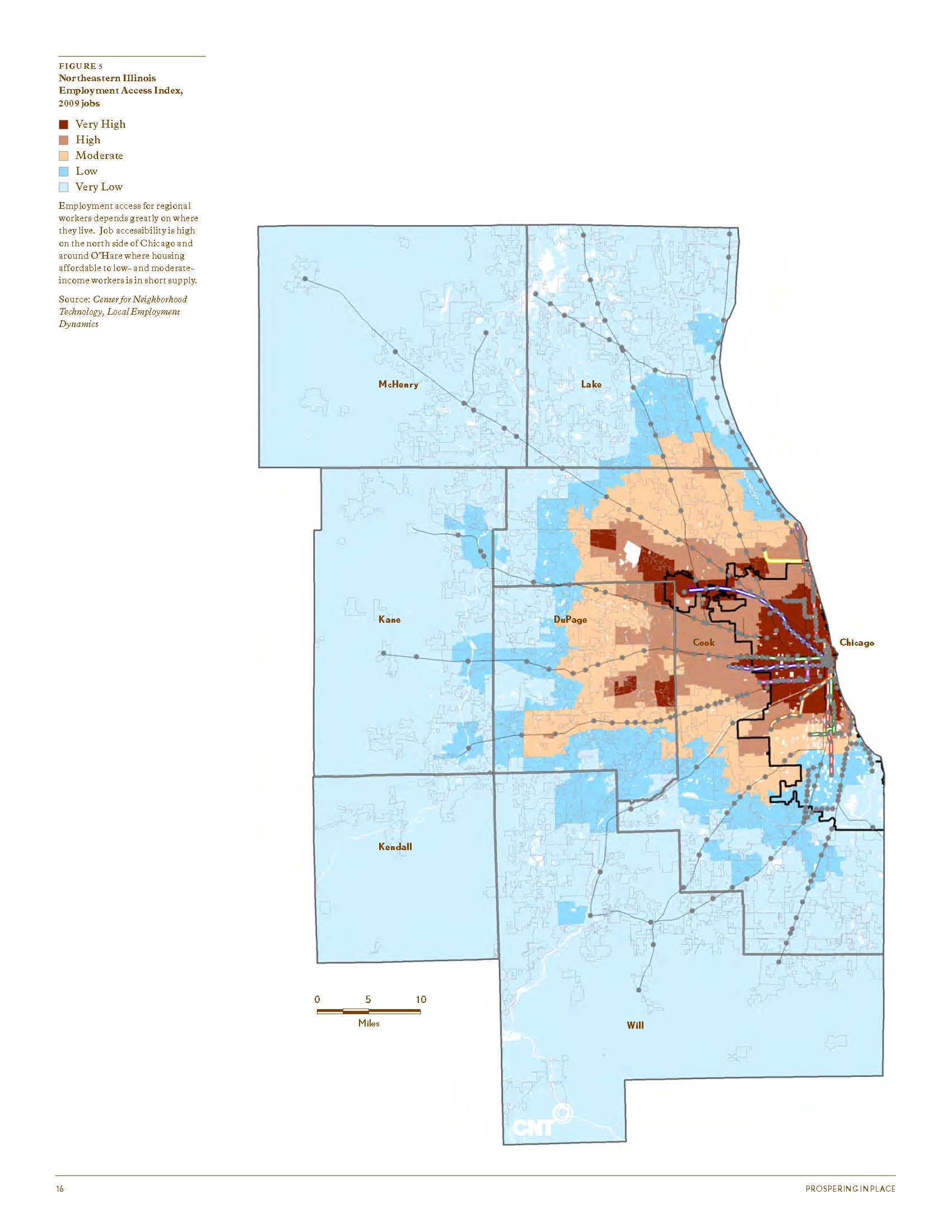CENTER FOR NEIGHBORHOOD TECHNOLOGY
PLACES MATTER. But for decades our region disregarded its historic, compact, transit-served neighborhoods in favor of urban sprawl with its dependence on cars and cheap gas. When the economy was growing, the cost of this shift was less apparent, but stagnant incomes, high unemployment, and historic fuel prices have exposed the long term folly of this development strategy.
The answer to this problem is location efficiency: our legacy development pattern with its respectful use of scarce land and energy, its appreciation for interaction and community, and a high esteem for the mass transit system that served it so well. In this “back to the future” scenario, we live closer to where we work; take transit, rather than drive; strengthen walkable neighborhoods that meet needs locally; and celebrate the vitality of compact, diverse communities linked together by fast, convenient, and affordable transit.
Prospering in Place is CNT’s call to action. It embraces the goals of the Chicago region’s GO TO 2040 plan and translates them into a place-based blueprint for prosperity. It shows how to restore location efficiency and create new jobs and economic vitality based on our unique assets and advantages:
- The most robust freight rail network in the country,
- The second largest passenger rail system in the country,
- Ample land adjacent to both systems available for development, and
- A culture that increasingly values a vibrant urban lifestyle.
…
A Growing Divide Between People, Jobs, and Transit
The movement of jobs away from historic transportation hubs has made highways the best, in some cases the only, way for employees to get to work. The number of jobs within a 10-minute walk of rail stations dropped over the last decade. Between 2002 and 2008, the seven-county region of northeastern Illinois—including Cook, DuPage, Kane, Kendall, Lake, McHenry, and Will counties—added a net 110,314 jobs. Yet the number of total jobs within one-half mile of transit declined by 5,555. Low and moderate income workers, already burdened by the cost of driving, felt this drop most acutely. The number of jobs paying less than $40,000 per year located within a half-mile of transit declined by 119,683, or 16 percent. This gave fewer working households a choice between car and public transportation options.
The trend had a bigger impact on blue collar jobs but did not spare white collar jobs. More than a quarter of the loss of manufacturing jobs in the Chicago region—17,000 in all—came from firms within a 10-minute walk of a train station. Highly skilled “knowledge workers” have been shown to have among the highest transit ridership rates for their commutes. However even here, the Chicago region posted a decline of 19,469 knowledge jobs within walking distance of transit between 2002 and 2008. Only four sectors of the economy experienced modest growth in the share of jobs near transit: management of companies, arts and entertainment, accommodation and food services, and government.
The development patterns that separated workers and employers now threaten Chicago’s economy. Strapped households unwittingly foot the bill for higher transportation costs associated with longer commutes and daily errands, both of which increasingly require a car. Businesses pay the price in employee turnover as they try to woo workers to suburban locations that lack housing affordable to the full range of open positions and that sit just beyond the reach of reliable public transportation. Local governments pick up the tab as they overextend themselves for roads, lights, sewers, and water mains in new communities, while existing ones with this infrastructure already in place go begging for development.
In sum, the Chicago region is suffering the consequences of past development decisions in the form of dollars leaking from our economy. Looking toward the future, CNT estimates that accommodating 50 percent of our population growth through 2040 in compact mixed use developments rather than low density, single use developments will save the region an additional $1.5 billion per year in household transportation costs alone. Dollars siphoned from our economy for unnecessary transportation costs is but one measure of what ails our region.
Figure 5: Northeastern Illinois Employment Access Index, 2009 jobs (Click to Zoom)
 Download full version (PDF): Prospering In Place
Download full version (PDF): Prospering In Place
About The Center for Neighborhood Technology
www.cnt.org
“Founded in 1978, the Center for Neighborhood Technology has been a leader in promoting more livable and sustainable urban communities. In fact, our work focused on sustainable development before the term became as popular as it is today. As a creative think-and-do-tank, we research, invent, and test urban strategies that use resources more efficiently and more equitably.”
Tags: Center for Neighborhood Technology, CNT, IHDA, Illinois Housing Development Authority






 RSS Feed
RSS Feed